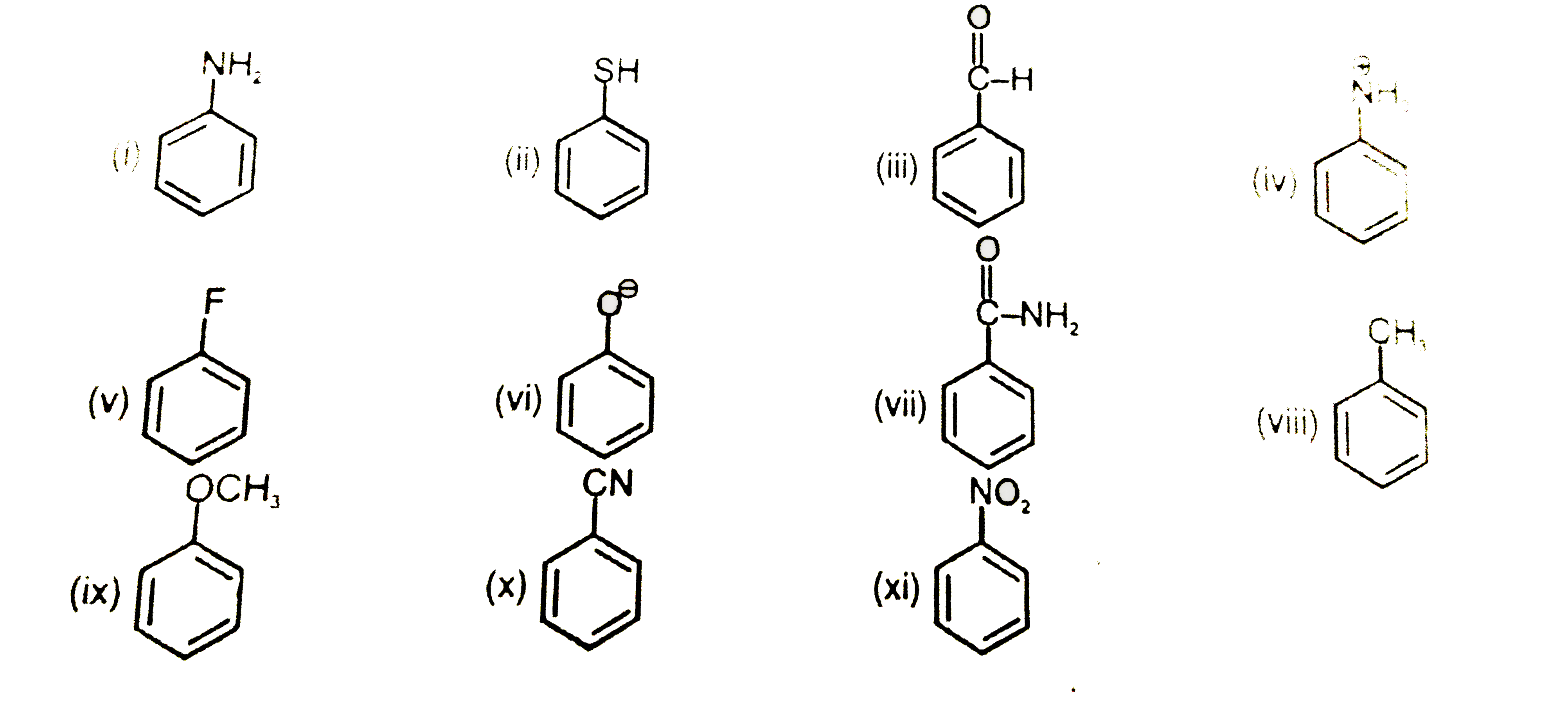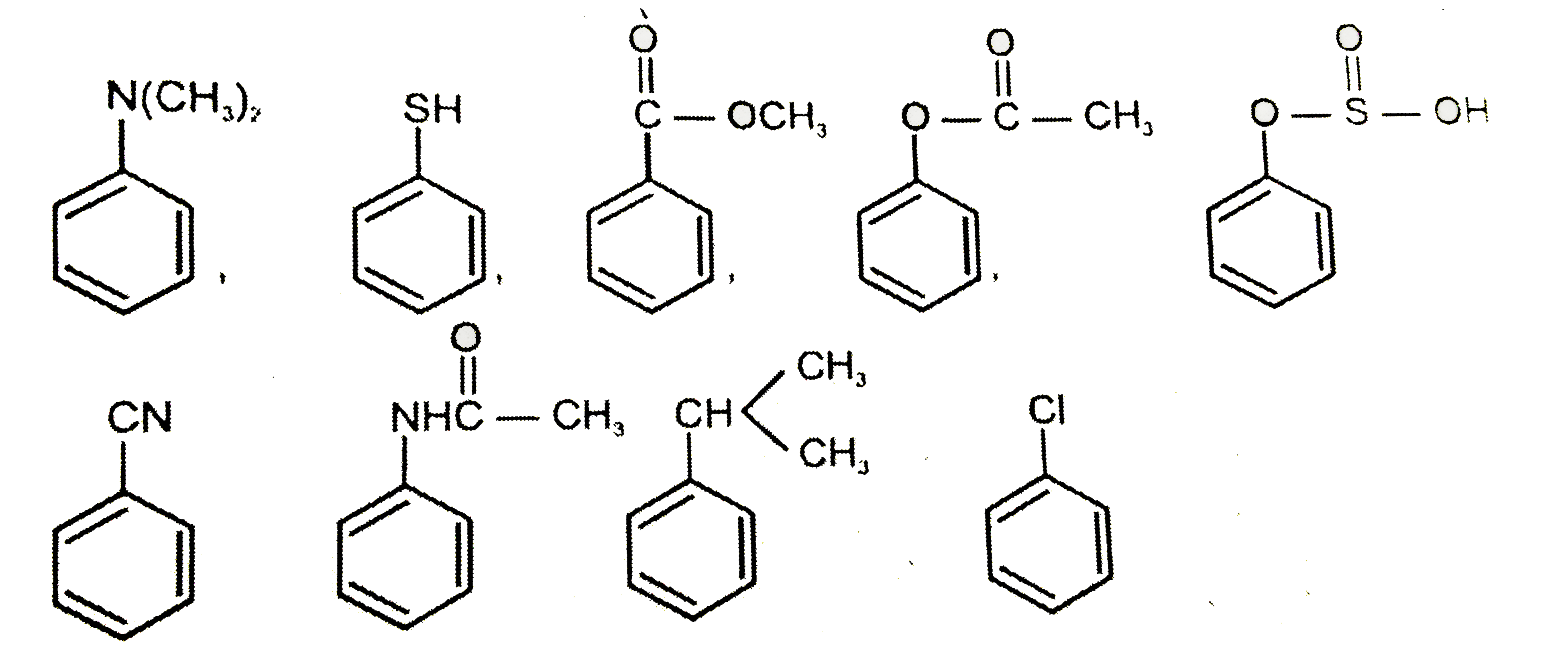Predict the nature of the effect when 'Cl' and groups are attached to the benzene ring. Write the different resonating structures.
To predict the nature of the M-effect (mesomeric effect) when Cl (chlorine) and NO2 (nitro) groups are attached to the benzene ring, we need to analyze each substituent's effect on the benzene ring and draw the corresponding resonating structures.
1. Identify the Groups and Their Effects:
- Chlorine (Cl) is a halogen and has a lone pair of electrons. It exhibits a +M effect (electron-donating) due to resonance.
- Nitro group (NO2) is an electron-withdrawing group and exhibits a -M effect (electron-withdrawing) due to resonance.
2. Resonating Structures for Chlorobenzene (Cl):
- The lone pair of electrons on chlorine can participate in resonance with the benzene ring.
- The resonance structures can be drawn as follows:
- Structure 1: The lone pair on Cl donates to the benzene ring, forming a double bond between Cl and the adjacent carbon, resulting in a positive charge on the carbon atom.
- Structure 2: The double bond shifts, creating a new double bond and moving the positive charge to another carbon.
- Structure 3: The process continues, allowing for delocalization of the electrons across the ring.
The resonating structures can be summarized as:
- Cl donates its lone pair → Positive charge on the adjacent carbon.
- The positive charge shifts around the ring through resonance.
3. Resonating Structures for Nitrobenzene (NO2):
- The nitro group is highly electronegative and pulls electron density away from the benzene ring.
- The resonance structures can be drawn as follows:
- Structure 1: The nitrogen atom in NO2 has a positive charge, and it pulls electrons from the benzene ring, creating a positive charge on the benzene ring.
- Structure 2: The electrons from the benzene ring move to form a double bond with nitrogen, while the oxygen carries a negative charge.
- Structure 3: The resonance continues, allowing for the delocalization of charges.
The resonating structures can be summarized as:
- NO2 withdraws electrons → Positive charge on the benzene ring.
- The structure continues to shift the charges around the ring.
Conclusion:
- The M-effect of Cl is +M (electron-donating), while the M-effect of NO2 is -M (electron-withdrawing).
- The resonance structures illustrate how the electron density is affected by these substituents.
- Chlorine (Cl) is a halogen and has a lone pair of electrons. It exhibits a +M effect (electron-donating) due to resonance.
- Nitro group (NO2) is an electron-withdrawing group and exhibits a -M effect (electron-withdrawing) due to resonance.
- The lone pair of electrons on chlorine can participate in resonance with the benzene ring.
- The resonance structures can be drawn as follows:
- Structure 1: The lone pair on Cl donates to the benzene ring, forming a double bond between Cl and the adjacent carbon, resulting in a positive charge on the carbon atom.
- Structure 2: The double bond shifts, creating a new double bond and moving the positive charge to another carbon.
- Structure 3: The process continues, allowing for delocalization of the electrons across the ring.
- Cl donates its lone pair → Positive charge on the adjacent carbon.
- The positive charge shifts around the ring through resonance.
- The nitro group is highly electronegative and pulls electron density away from the benzene ring.
- The resonance structures can be drawn as follows:
- Structure 1: The nitrogen atom in NO2 has a positive charge, and it pulls electrons from the benzene ring, creating a positive charge on the benzene ring.
- Structure 2: The electrons from the benzene ring move to form a double bond with nitrogen, while the oxygen carries a negative charge.
- Structure 3: The resonance continues, allowing for the delocalization of charges.
- NO2 withdraws electrons → Positive charge on the benzene ring.
- The structure continues to shift the charges around the ring.
- The M-effect of Cl is +M (electron-donating), while the M-effect of NO2 is -M (electron-withdrawing).
- The resonance structures illustrate how the electron density is affected by these substituents.
Similar Questions
Knowledge Check
Which of the following antibiotic contains NO2 group attached to aromatic nucleus in its structure?
APenicillinBStreptomycinCChloramphenicolDAll of these
How many groups (attached with benzene ring) can show +M effect ?

View SolutionOut of -OH and −NO2 groups, which deactivates the benzene ring and why?
View SolutionIn which of the following, the group attached to the benzene ring shows +R effect
View SolutionWhich of the following groups exerts +m effect when attached with benzene ring?
View SolutionWhich of the following groups (attached with benzene ring ) show +M effect ?

View SolutionIdentify strongest electron withdrawing group among the given when attached to benzene ring ?
View SolutionWrite the resonance structures for SO3andNO−3
View Solution
